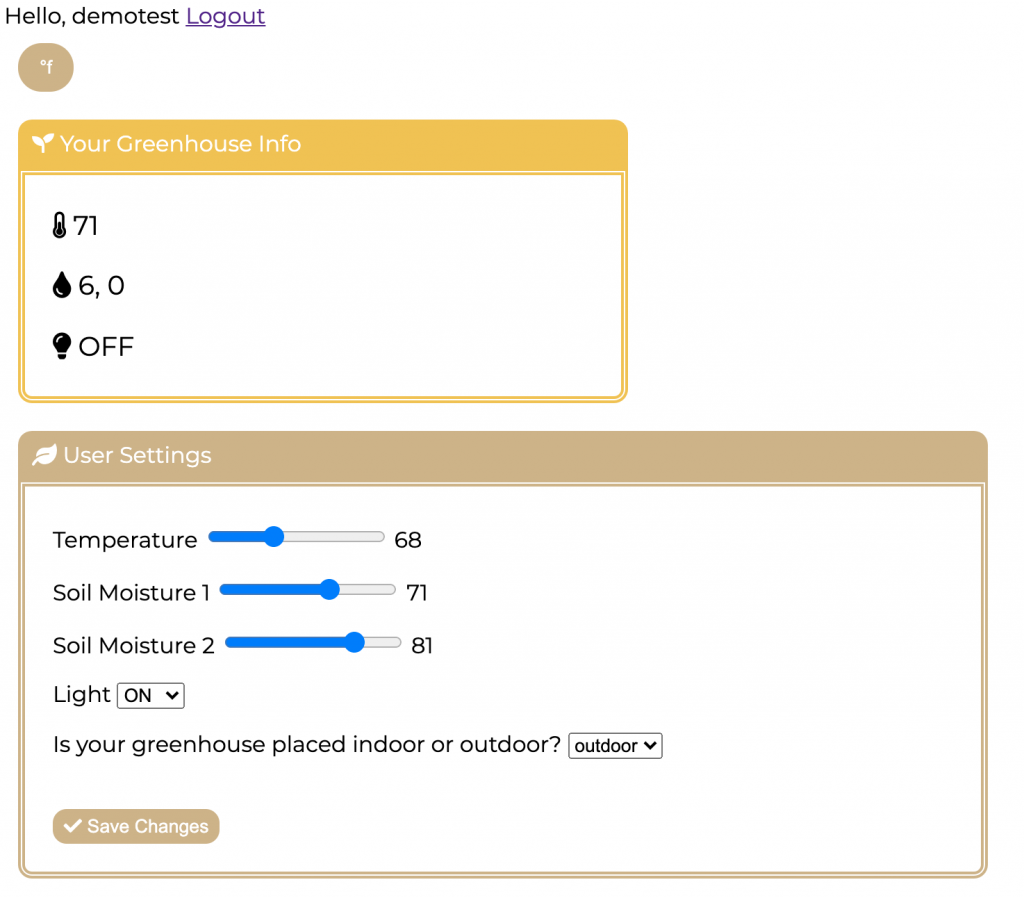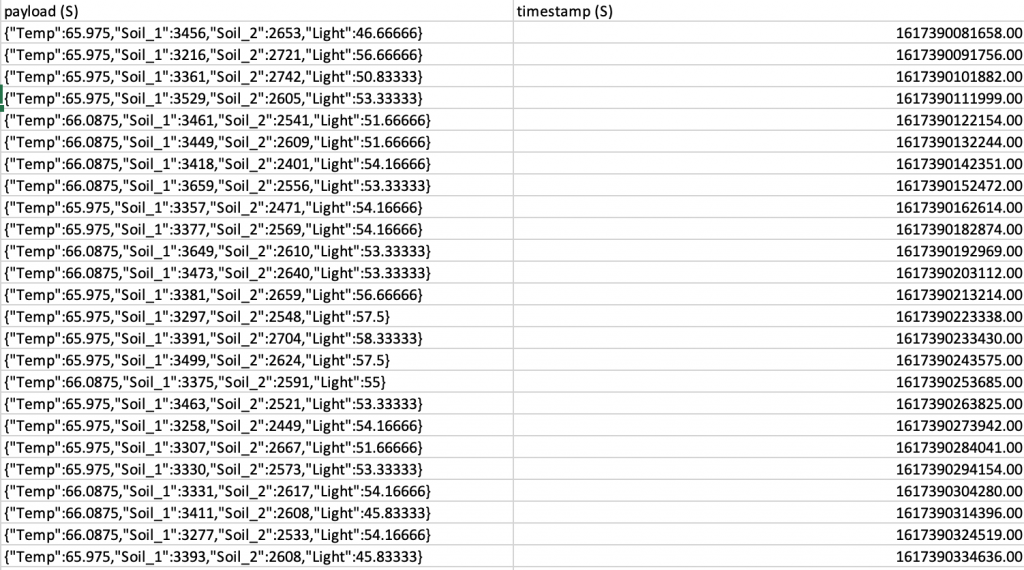This week, I worked on testing the metrics between hardware and web app/database and also created a script to periodically monitor the information of the greenhouse. I also worked on the final presentation slides preparation.
Hiroko and I worked on the testing together. We were aiming to have time lag under 1 hour to send the data from web app to ESP32 from our initial presentation. It came out that it only takes around 2 seconds, which was a good surprise. For the transmission between ESP32 and DynamoDB, it also takes around 1 or 15 seconds. It seems like it takes around 15 seconds when we are on different wifi and 1 second when we are on the same wifi. However, because the time different seems so big, Hiroko and I are planning to test this out again this weekend.
My new script should constantly get the information of the greenhouse every 15 minutes. Once the user’s preferred goals are set, the script should detect this change and send appropriate signal to ESP32.
So far, I am on schedule. Next week, I will meet with Sarah in person and try to integrate her live video into the website. I am also aiming to improve the webUI because it seems a bit blunt right now if I have time.


